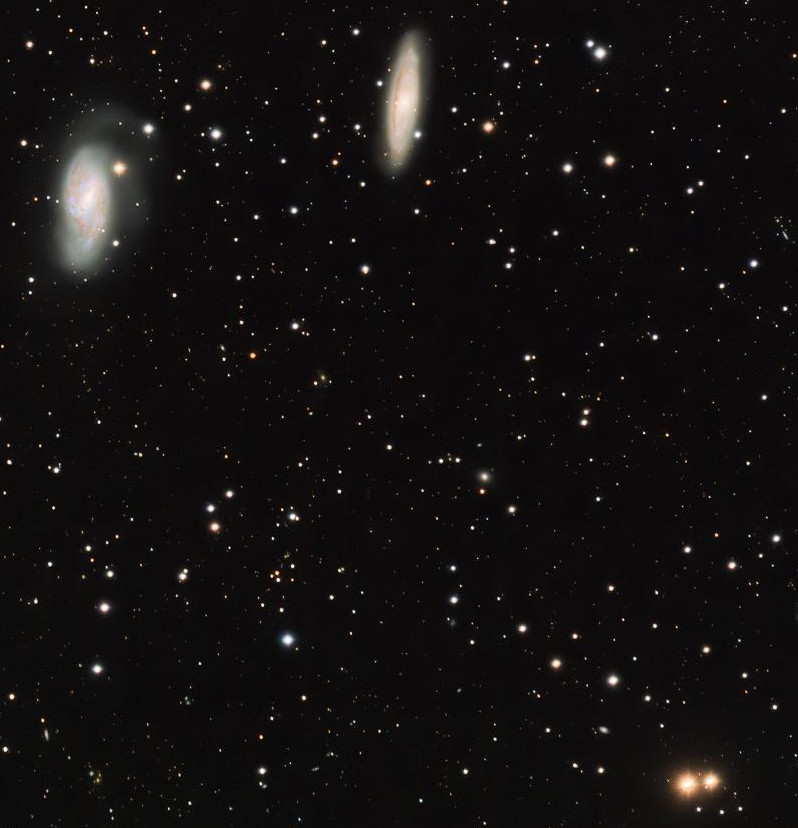Two Infinities
Sat, 18 Apr 2020
Double Stars or Fooled by Randomness?
R. Q. Fugate and J. W. Briggs sent out a lovely photo of the Leo Triplet of galaxies, a section of which is displayed below. When looking at such photos with their profusion of stars, my eye tends to single out pairs of stars, and I have often wondered whether the stars were actually close, gravitationally bound, or whether my eye was fooled by randomness. Take, for example, pair of bright orange stars in the lower right corner. Are they close to each other?
Beginning with M66, the galaxy on the left, one can hop down to the bright pair using, say, Simbad (http://simbad.u-strasbg.fr) and its Aladin viewer. These stars are identified as HD 98172, the brighter one, and BD+13 2382. From their coordinates, one sees they are further apart than most double stars, over 2' or about 136 arcseconds east-west as a first estimate, and so are unlikely to be related.
Nevertheless, both Regulus and Iota Leonis in the same constellation have companions listed in the Cambridge Double Star Atlas with separations of 2.9' and 5.5'respectively. So it might still be conceivable the stars are conjoined by gravity. The Simbad also gives proper motion, radial velocity and parallax data for each star. These data indicate the two stars are headed in different directions at different speeds and, by parallax, are at quite different distances from us. So these two stars, however alluring, form an optical, not a physical pair.

posted at: 16:14 | path: | permanent link to this entry
